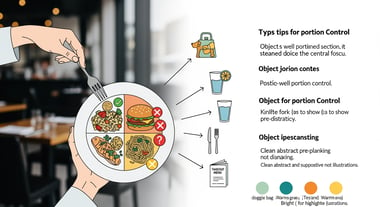As Master Kim, the Strategic Roadmaps Architect for BeSlim.me, I specialize in dissecting diet strategies with a balanced, evidence-based lens. Intermittent fasting (IF) has gained traction for its potential to support weight management and metabolic health, but breaking a fast improperly can undermine these benefits and lead to discomfort or health risks. This guide focuses on the method of breaking a fast safely, providing a structured approach rooted in clinical evidence. We'll analyze the pros and cons, outline a phased implementation roadmap, highlight pitfalls, and deliver actionable tips. Remember, while IF can be effective, it's not suitable for everyone—consult a healthcare professional before starting, especially if you have conditions like diabetes or eating disorders.
Pros & Cons of Breaking a Fast Safely
Breaking a fast with intention—starting with small, nutrient-dense foods and gradually increasing intake—helps transition your body back to regular eating without overwhelming your digestive system. Below is a balanced analysis of this method based on clinical insights.
| Aspect | Pros | Cons |
|---|---|---|
| Health Impact | Minimizes digestive distress like bloating or nausea by easing the body into digestion, supporting gut health and nutrient absorption. Intermittent fasting combined with careful refeeding can enhance metabolic flexibility. | May require discipline to avoid overeating, and improper execution could still cause temporary side effects like fatigue or headaches. |
| Ease of Implementation | Straightforward with simple food choices; adaptable to various IF protocols (e.g., 16/8 or 5:2). | Time-consuming for planning, especially for beginners who might feel restricted in food options initially. |
| Sustainability | Promotes long-term adherence to IF by preventing negative experiences, leading to better weight loss outcomes over time. | Not a "quick fix"—requires ongoing mindfulness, and some may find it unsustainable if they prefer unrestricted eating post-fast. |
| Evidence Base | Backed by studies showing reduced risk of refeeding syndrome in extended fasts. | Limited long-term data on ultra-short fasts; individual responses vary, and it's contraindicated for pregnant individuals or those with eating disorders. |
| Overall Effectiveness | High for maintaining IF benefits like improved insulin sensitivity, with fewer setbacks. | Potential for nutrient gaps if not balanced, and it may not suit high-intensity athletes needing immediate energy. |
This table highlights the strategic value of safe fasting breaks: they amplify IF's advantages while mitigating risks. However, potential side effects include gastrointestinal upset, electrolyte imbalances, or dizziness if not managed properly—always prioritize hydration and listen to your body.
Understanding Intermittent Fasting and the Importance of Breaking It Safely
Intermittent fasting involves cycling between periods of eating and fasting, with popular methods like the 16/8 (16 hours fasting, 8 hours eating) or alternate-day fasting. The key mechanism? It allows your body to shift from glucose to fat metabolism, potentially aiding weight loss and cellular repair. But abruptly ending a fast with heavy meals can spike blood sugar, cause digestive overload, or even lead to refeeding syndrome in prolonged fasts—a serious condition involving electrolyte shifts.
Why focus on breaking the fast? Clinical evidence suggests that a gradual reintroduction of food preserves IF's benefits, such as improved insulin sensitivity and reduced inflammation. Without it, you risk undoing progress—think rebound weight gain or metabolic disruption. This guide is designed for intermittent fasters seeking a practical, evidence-backed method to transition smoothly.
Step-by-Step Implementation Guide
To implement safe fasting breaks, we'll use a phased approach rather than weekly breakdowns, as IF is often cyclical and personalized. This roadmap assumes you're practicing a standard IF protocol (e.g., 16/8) and have fasted for 12-24 hours. For longer fasts (over 48 hours), seek medical supervision due to heightened risks like nutrient deficiencies.
Adjust based on your experience level: beginners start slower, while veterans can accelerate. Each phase includes actionable steps, backed by evidence, and incorporates risk warnings for sustainability.
Phase 1: Preparation (Pre-Break Planning, 1-2 Days Before Your Next Fast Ends)
Prepare your mindset and environment to avoid impulsive choices. This phase sets the foundation for metabolic stability.
Assess Your Fast Duration and Health Status: Review how long you've fasted. For short fasts (under 24 hours), risks are low, but longer ones increase chances of electrolyte imbalance. Warn: If you experience dizziness or irregular heartbeat, break the fast immediately and consult a doctor—contraindicated for those with low blood pressure or kidney issues.
Hydrate and Electrolyte Balance: Drink water, herbal tea, or electrolyte solutions (e.g., with a pinch of salt). Evidence shows hydration prevents dehydration-related fatigue during transitions hydration's role in fasting recovery.
Plan Your First Meal: Choose easily digestible foods like bone broth or fruit. Stock your kitchen to avoid temptation. Goal: Aim for 200-300 calories initially to gently restart digestion.
Phase 2: Initial Break (First 30-60 Minutes Post-Fast)
Ease in with minimal volume to "wake up" your digestive enzymes without overload.
Start Small and Simple: Begin with liquids or soft foods. Example: Sip on bone broth or eat a small piece of fruit like a banana. This provides quick nutrients without taxing the gut. Backed by studies: Gradual refeeding reduces gastrointestinal stress.
Monitor Your Body: Eat slowly, chewing thoroughly. Stop if you feel full or nauseous. Risk warning: Overeating here can cause bloating or acid reflux—unsustainable for long-term IF if it leads to discomfort.
Incorporate Nutrients: Focus on electrolytes (potassium from bananas, sodium from broth) to counteract potential imbalances from fasting.
Phase 3: Building Up (Next 1-2 Hours)
Gradually increase complexity to rebuild energy stores.
Add Light Proteins and Veggies: Introduce yogurt, eggs, or steamed vegetables. Example meal: Greek yogurt with berries (300-400 calories). This supports muscle repair without blood sugar spikes.
Balance Macros: Aim for 40% carbs, 30% protein, 30% fats to stabilize energy. Evidence: Balanced refeeding maintains IF's insulin benefits.
Hydrate Continuously: Drink water between bites. Warn: Dehydration can exacerbate headaches or fatigue—contraindicated if you have gastrointestinal disorders.
Phase 4: Full Integration (Rest of the Eating Window)
Return to normal meals while maintaining mindfulness.
Incorporate Balanced Meals: Build up to full portions, like a salad with lean protein and healthy fats. Avoid processed foods to sustain IF's anti-inflammatory effects.
Track and Adjust: Log how you feel in a journal. If energy dips, extend Phase 3 next time.
Sustain for Cycles: Repeat this for each fast break. Over time, it becomes habitual, enhancing IF's long-term viability. Risk: Unsustainable if it feels restrictive—pair with professional guidance for personalization.
This phased guide, when followed, can make IF more effective and enjoyable. Total implementation time per cycle: 2-4 hours post-fast, with preparation boosting adherence.
Common Pitfalls and How to Avoid Them
Even with a solid plan, pitfalls can derail your progress. Here's a strategic breakdown of common issues, with evidence-based avoidance strategies. Remember, IF isn't one-size-fits-all; potential contraindications include pregnancy, breastfeeding, or history of disordered eating—discontinue if side effects persist.
Pitfall: Overeating or Choosing Heavy Foods: Rushing into large, fatty meals can cause indigestion or nausea. Avoidance: Stick to Phases 1-3 strictly; evidence from fasting studies shows gradual intake prevents this.
Pitfall: Ignoring Hydration and Electrolytes: Fasting depletes stores, leading to headaches or cramps. Avoidance: Pre-hydrate and include electrolyte-rich foods—backed by clinical reviews on fasting physiology.
Pitfall: Not Listening to Your Body: Pushing through discomfort can lead to burnout or health issues like nutrient deficiencies. Avoidance: Monitor symptoms and adjust; consult a doctor for personalized tweaks. Warn: This method may be unsustainable for those with high stress or poor sleep, as it could exacerbate fatigue.
Pitfall: Inconsistency Across Cycles: Skipping planning leads to poor choices. Avoidance: Use a fasting app for reminders; consistency builds metabolic resilience over time.
By addressing these, you minimize risks and maximize IF's benefits, such as sustained weight loss.
3 Highly Actionable Tips for Immediate Start
Ready to apply this? Here are three immediate, goal-oriented tips to kick off safe fasting breaks:
Stock Your "Break Kit" Today: Prepare a kit with bone broth, fruits, and yogurt. This ensures you're ready for your next fast end, reducing decision fatigue and promoting adherence.
Set a Timer for Phases: Use your phone to time Phase 2 (30 minutes) and Phase 3 (1 hour), eating mindfully within those windows to build the habit of gradual refeeding.
Journal Your First Break: After breaking your next fast, note what worked and any side effects. Review weekly to refine your approach, turning it into a personalized strategy.
Implementing these will help you break fasts safely, supporting your IF journey with confidence.
References
Intermittent fasting combined with careful refeeding can enhance metabolic flexibility - National Institutes of Health (NIH)
Improved insulin sensitivity and reduced inflammation - Mayo Clinic
Hydration's role in fasting recovery - Healthline
Medical Disclaimer
The content on this website is for informational and educational purposes only. It is not intended as medical advice and should not be relied upon as a substitute for consultations with qualified healthcare professionals who are familiar with your individual medical needs. Always seek the advice of your physician or other qualified healthcare provider with any questions you may have regarding a medical condition. Never disregard professional medical advice or delay in seeking it because of something you have read on this website.





Comments (0)
No comments yet. Be the first to comment!